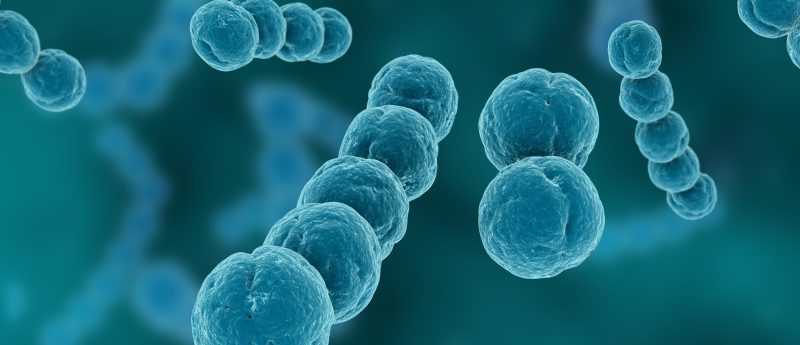Streptococcus pneumoniae use bleaching agent to help cause infection

Researchers, Nelson Gerkara (Stockholm University, Sweden) and Saskia Erttmann (Umeå University, Sweden) recently showed that Streptococcus pneumoniae use the common bleaching agent, hydrogen peroxide (H2O2), to inhibit inflammasomes, key components of the innate immune system. This inhibition facilitates the pathogen colonization of the host and causes pneumonia.
In the past, research has focused largely on endogenous H2O2 production and the role that it plays in driving inflammatory processes and killing microbes. However, H2O2 production is not unique to host cells and many microbes also produce significant quantities of H2O2.
Host cells use H2O2 as a defence mechanism against invading microbes and since high quantities of H2O2 are toxic for both microbe and host, according to this research Streptococcus pneumoniae are ‘fighting fire with fire’ by utilizing the same substance to successfully overwhelm the natural immune response.
In this study, recently published in Nature Communications, researchers focused their studies on Streptococcus pneumoniae, which is responsible for a range of illnesses, namely pneumonia, and is also known to predispose the host to colonization by other microbes. An increased understanding of the host–microbe interaction is invaluable for the improvement of antibacterial therapies.
For an invading microbe to successfully colonize the host it must exist in the body without triggering an inflammatory reaction strong enough to eliminate it. The scientists found that Streptococcus pneumoniae achieve this by targeting the inflammasomes with H2O2. By releasing significant quantities of H2O2 the bacteria cause oxidative inactivation of the inflammasomes, which weakens the immune response and allows colonization.
The researchers demonstrated, using mice models, that bacteria modified to produce less H2O2 were more effectively cleared from mice lungs as the inflammasomes are not inactivated to the same extent. The study also found that the use of mice inoculated with catalase leads to increased inflammatory markers and faster elimination of bacteria from the lungs.
The authors stress two significant findings of this research, first the newly uncovered “mechanism of innate immune subversion by bacteria” and second the “unexpected role of H2O2 in the negative regulation of inflammasomes.”
The authors conclude that these findings are “consistent with increasing clinical and experimental evidence linking a reduction in intracellular reactive oxygen species with hyper-inflammation.”
Much of our understanding of host–microbe interactions is based upon studying monomicrobial infections, however, in the clinic many infections are polymicrobial. The results reported show how H2O2-mediated inflammasome inhibition enables bacteria to inhibit strong self-limiting inflammatory responses, while also blocking the ability of the immune system to prevent co-infection. Increasing our understanding of these host-microbe interactions may allow us to more effectively manage bacterial infections in the clinical setting.
You might also like:
Source: Erttmann SF, Gekara NO. Hydrogen peroxide release by bacteria suppresses inflammasome-dependent innate immunity. Nat. Commun. doi:10.1038/s41467-019-11169-x (2019) (Epub ahead of print).
What is the inflammasome?
Inflammasomes are a group of cytosolic multiprotein complexes responsible for the activation of inflammatory responses. They are key signaling platforms that detect pathogens and stressors, in turn activating the pro-inflammatory cytokines IL-1β and IL-18 that are result in pyroptosis.
How is H2O2 used by the immune system?
H2O2 concentration gradient has been shown to guide neutrophils to the wound to fight microorganisms, remove damaged tissue and start the inflammation process. Moreover, H2O2 in epithelial wounding could have a role in local killing of invading bacteria.